Immigration Law: Comparing Acts and Analyzing the Patriot Act
VerifiedAdded on 2022/10/15
|5
|789
|13
Homework Assignment
AI Summary
This assignment analyzes and compares three key immigration laws: the Chinese Exclusion Act of 1882, the Immigration Act of 1891, and Immigration and Customs Enforcement (ICE) established in 2003. The paper examines the historical context, problems addressed, public reception, and effectiveness of each. Furthermore, the paper explores the USA Patriot Act of 2001, discussing its purpose, main provisions, and effectiveness in relation to national security and terrorism. The analysis includes a critical assessment of the laws' justifications in their respective cultural contexts and suggests alternative approaches to address the issues. The assignment provides a comprehensive overview of these critical immigration policies and their impact on the United States.
1 out of 5
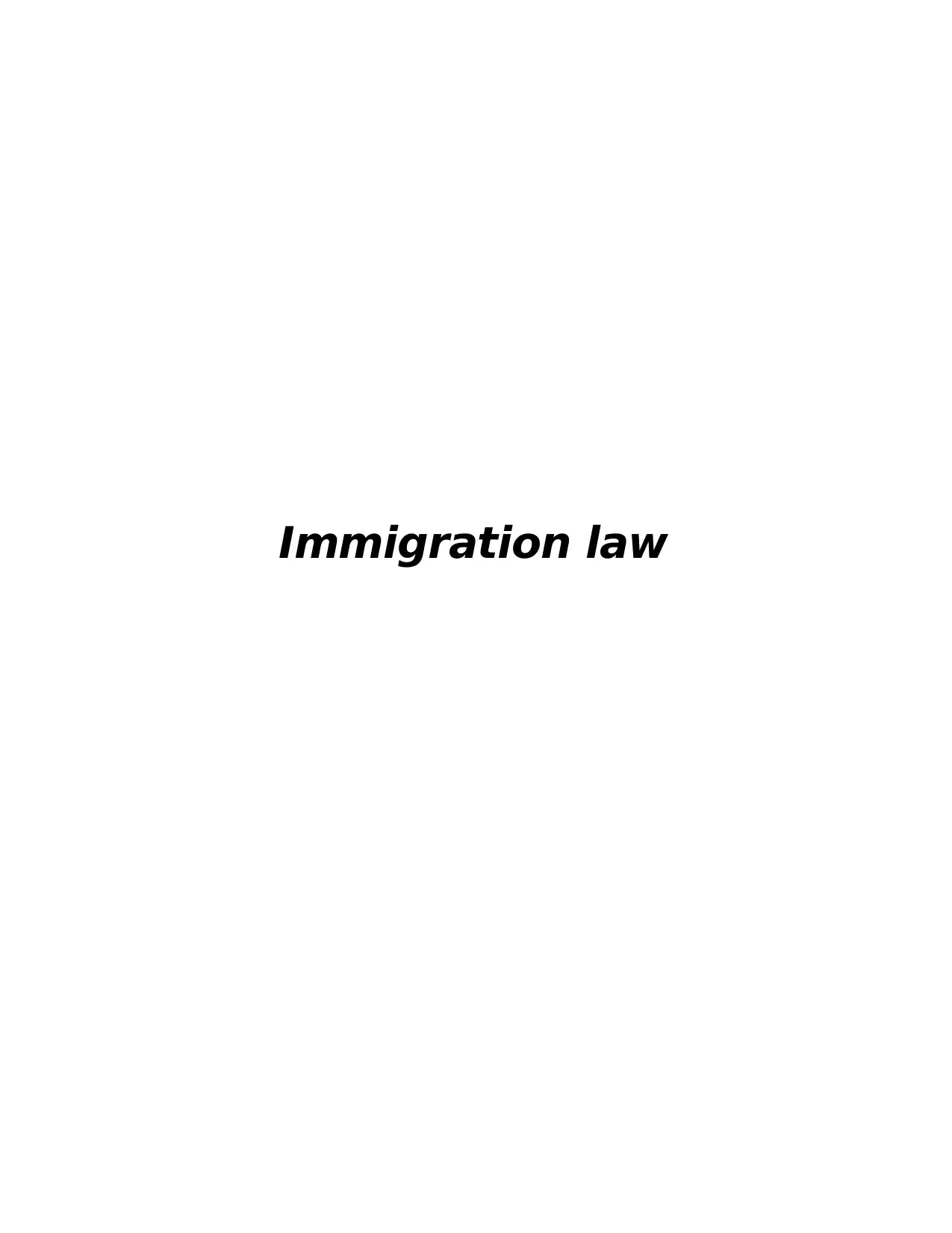
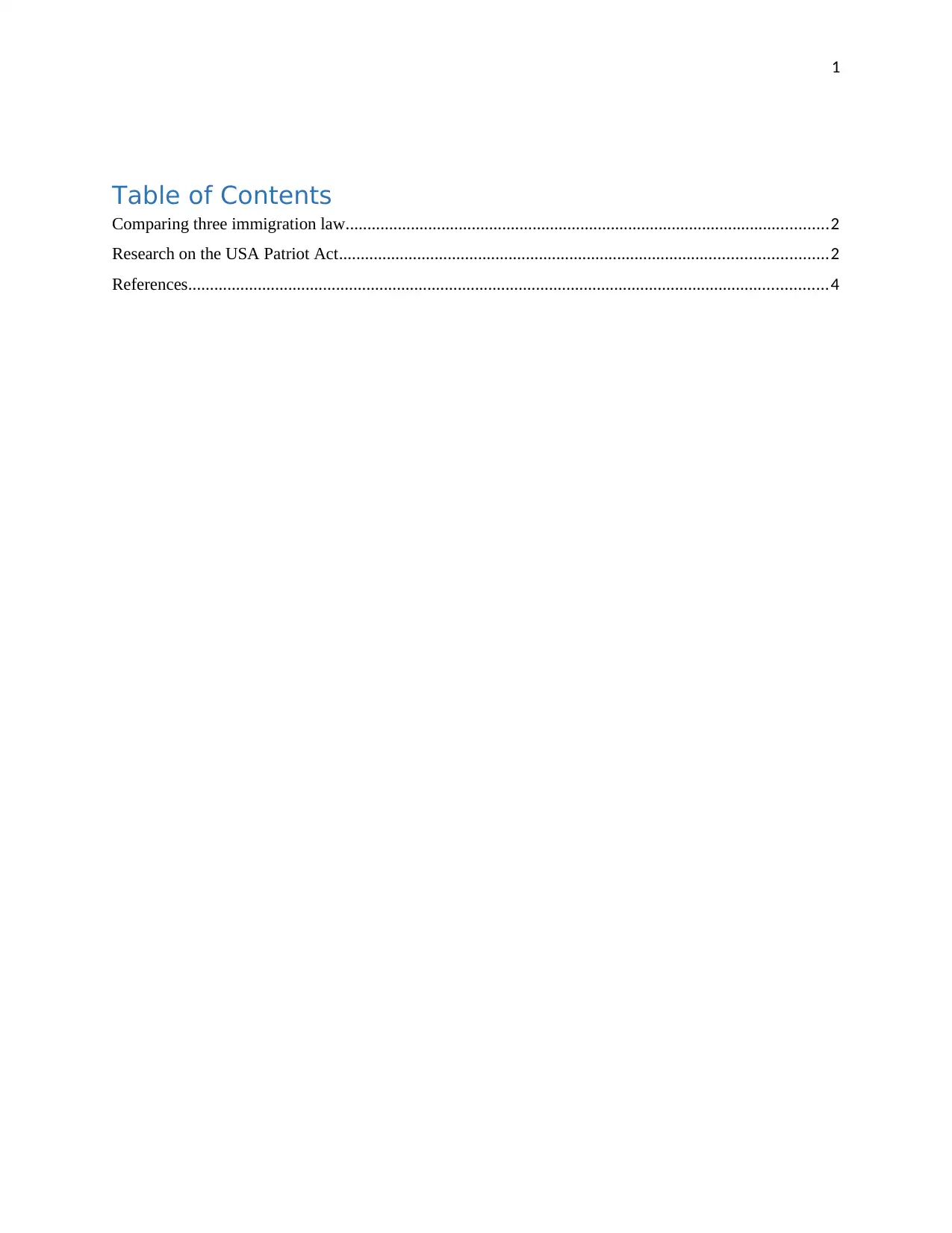
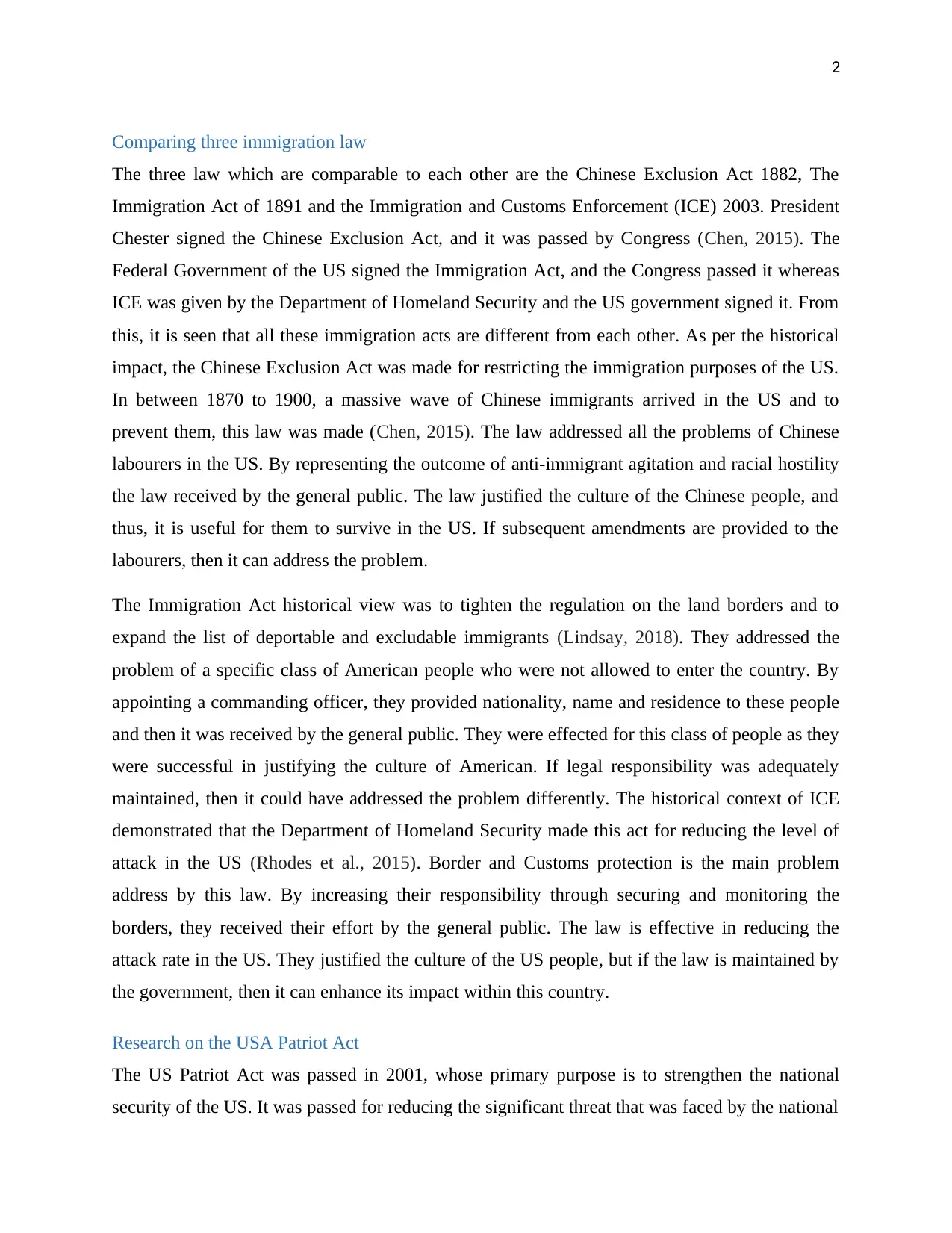

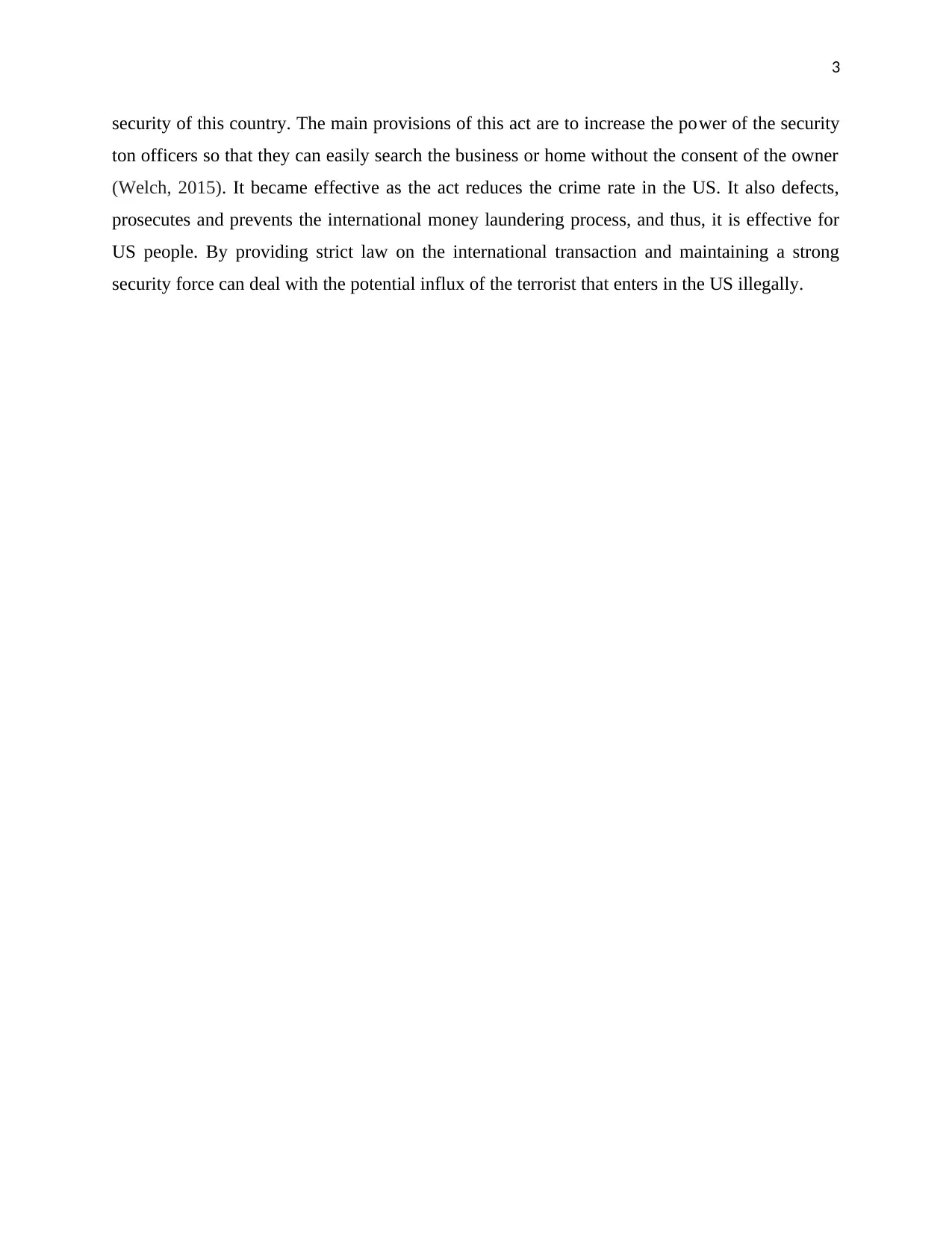
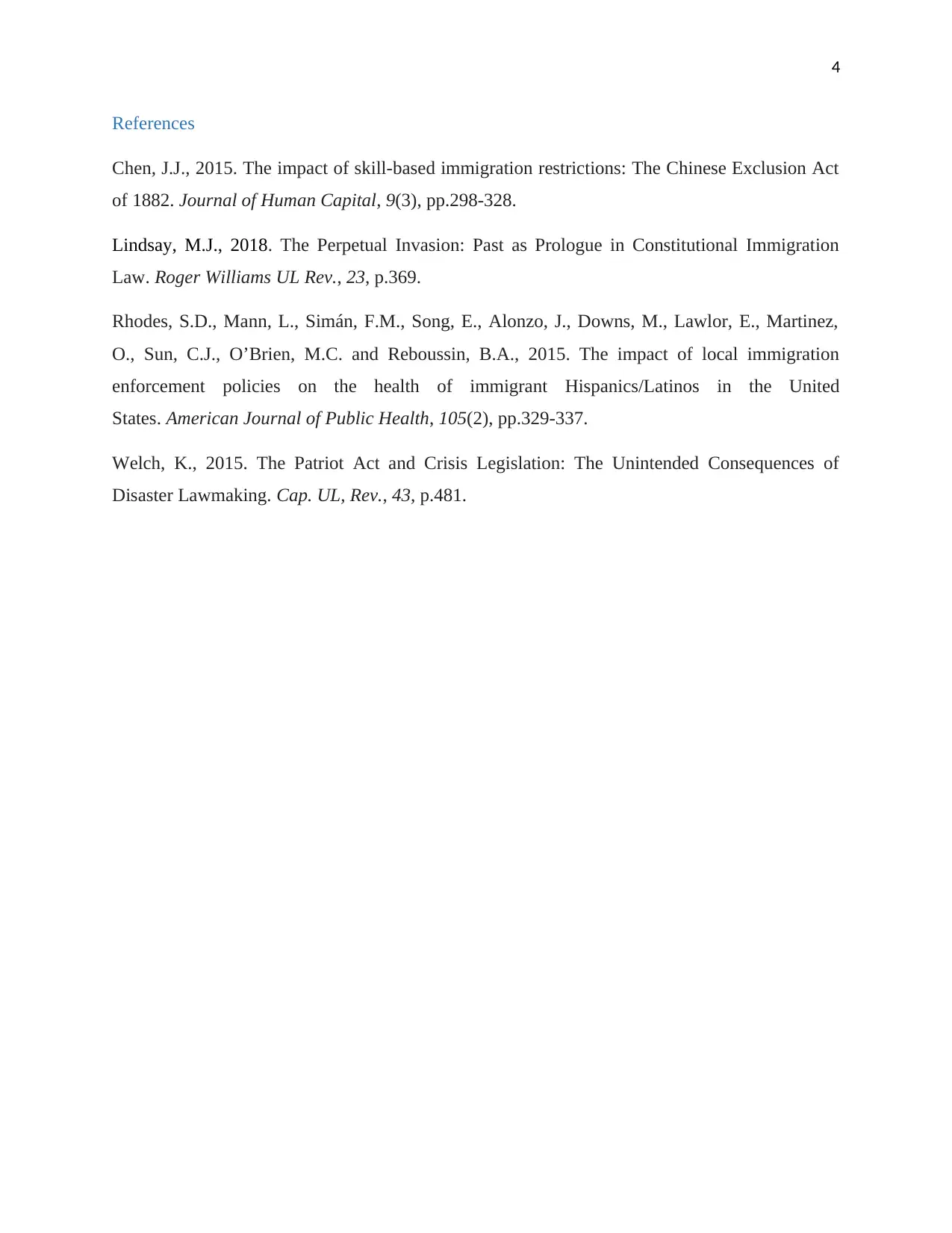

![[object Object]](/_next/static/media/star-bottom.7253800d.svg)